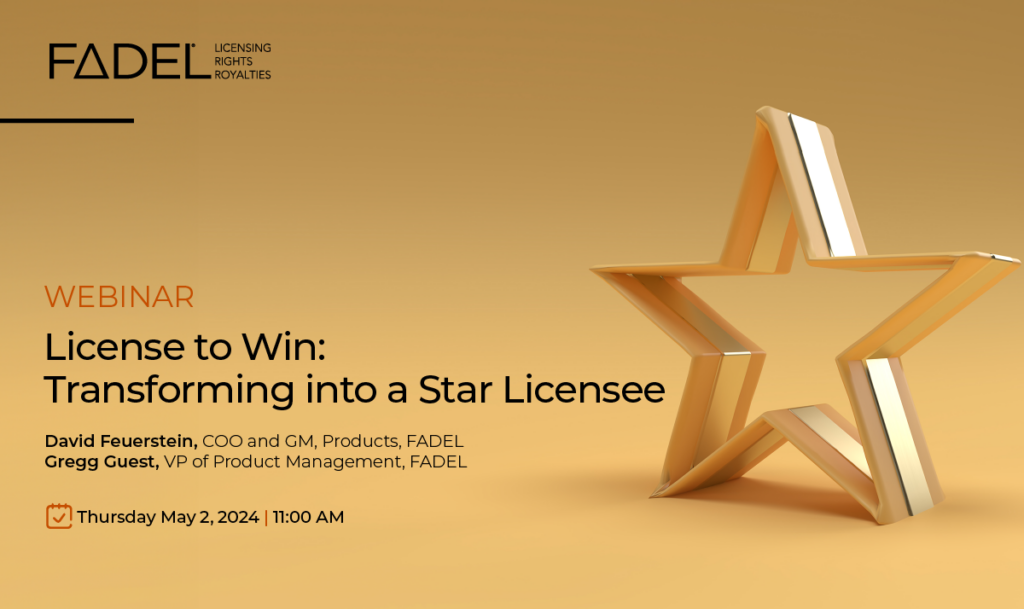
The Rights Approach: A Guided Checklist for Your Digital Rights Management Implementation

Try an experiment of going one full day without viewing any media content. It is almost impossible these days to do so, as most of us either turn on a television, scroll through mobile apps or sit at computers over half of the time awake. It is a bumper to bumper freeway of content out there and the time has never been so important for those responsible for managing digital assets to be sure that their content is not in violation of rights usage.
It is essential that companies are organized on the content side of the house as related to rights holders and usage allowances. For most, asset rights management is a new best practice that needs to be developed within current processes and often can be a challenge to implement.
Based on experience assisting companies go through the transitional process of integrating rights management into daily activities, the “Rights Approach” was created.
This method suggests that the following actions are taken:
- Review Processes
- Inventory Content
- Goal Setting
- Highlight Risks
- Take Action
- Success in Usage
Review Processes
Complete an in-depth review of how asset rights are currently being managed in the organization. It is best that all spectrums of asset use cases and processes surrounding each are discussed and documented for analysis of procedural gaps.
Ask the following questions during the process review.
- Where are your assets located?
- Do you know the rights associated with your assets?
- How are asset rights being tracked?
- Who in the organization is responsible for asset rights?
- How are assets approved for use based on rights?
Check off the category your organization falls into based on the answers to the above questions. It is possible to be a hybrid of categories.
⬜ Contract Based
If Contract Based, most or all asset rights management is being handled by the organization’s legal team. Contracts are housed in the legal department and are most likely not exposed cross-departmentally.
Common answers to process review questions are:
- Where are your assets located? Assets may or may not be kept in a DAM.
- Do you know the rights associated with your assets? Only if contract(s) can be located.
- How are asset rights being tracked? Legal holds rights agreement materials and may or may not audit use post approvals.
- Who in the organization is responsible for asset rights? Legal or employee with other non-asset related duties.
- How are assets approved for use based on rights? Manual contract review against assets to confirm use.
⬜ Librarian Based
If Librarian Based, most or all asset rights management is being handled by the organization’s digital asset, content or marketing team. Contracts are housed with one particular department and are most likely not exposed cross-departmentally.
Common answers to process review questions are:
- Where are your assets located? Assets are likely kept in a DAM but may not be.
- Do you know the rights associated with your assets? Rights based on contracts maintained in personal or shared folders.
- How are asset rights being tracked? Librarian responsible who may have a method such as a spreadsheet to track assets and rights details.
- Who in the organization is responsible for asset rights? Full-time dedicated resource with content management responsibilities.
- How are assets approved for use based on rights? Manual contract review against assets to confirm use.
⬜ Agency Based
If Agency Based, most or all asset rights management is being handled by a third-party advertising agency. Contracts are housed with the agency and may be shared with an organization’s digital asset, content or marketing team upon request. The contracts are most likely not exposed cross-departmentally.
Common answers to process review questions are:
- Where are your assets located? Assets may or may not be kept in a DAM.
- Do you know the rights associated with your assets? Only if the agency is saving contracts to a shared location.
- How are asset rights being tracked? Agency responsible who may have a method such as a spreadsheet to track assets and rights details.
- Who in the organization is responsible for asset rights? Agency responsible for content management duties.
- How are assets approved for use based on rights? Manual contract review against assets to confirm use.
⬜ Metadata Based
If Metadata Based, most or all rights management is being handled within metadata fields within a Digital Asset Management (DAM) system. Contracts are housed with an organization’s digital asset, content or marketing team who has the responsibility of entering metadata field information. There may be cross-departmental expose to the DAM materials and there is an honor system that rights are checked prior to asset use.
Common answers to process review questions are:
- Where are your assets located? All assets kept in a DAM.
- Do you know the rights associated with your assets? Only if metadata has been accurately updated.
- How are asset rights being tracked? Responsibility of a resource(s) to maintain and update rights associated to assets otherwise tracking cannot occur.
- Who in the organization is responsible for asset rights? Dedicated DAM manager or managers.
- How are assets approved for use based on rights? Review of metadata details.
⬜ Automated Software Based
If Automated Software Based, most or all rights management is being handled through the use of a software system and is either separate from a Digital Asset Management (DAM) system or can integrate with one.
Common answers to process review questions are:
- Where are your assets located? Assets may or may not be kept in a DAM with reference in other software system.
- Do you know the rights associated with your assets? Only if agreement rights for assets have been entered in the software system.
- How are asset rights being tracked? Software system houses all available asset rights details.
- Who in the organization is responsible for asset rights? Full-time dedicated resource or resources with content management and system setup responsibilities.
- How are assets approved for use based on rights? Automated system approval process for asset usage requests.
Inventory Content
Complete a full inventory of all asset materials to determine level.
Ask the following questions during the review.
- How many assets total?
- How many different types of assets (i.e. images, videos, etc.)?
- How many different locations are assets being stored?
Check off the level your organization falls into based on the answers to the above questions. It is possible to have a hybrid of levels.
⬜ Low
This level usually represents an organization that is novice to asset material creation and ownership.
Common answers to inventory questions are:
- How many assets total? 1,000 or less
- How many different types of assets (i.e. images, videos, etc.)? 1
- How many different locations are assets being stored? 1
⬜ Medium
This level usually represents an organization that is intermediate asset material creations and ownership.
Common answers to inventory questions are:
- How many assets total? 1,001 – 50,000
- How many different types of assets (i.e. images, videos, etc.)? 2 or less
- How many different locations are assets being stored? 2 or less
⬜ High
This level usually represents an organization that is advanced in asset material creations and ownership.
Common answers to inventory questions are:
- How many assets total? 50,001 or more
- How many different types of assets (i.e. images, videos, etc.)? 2 or more
- How many different locations are assets being stored? 2 or more
Goal Setting
Based on identifications of category (Review Processes) and level (Inventory Content), use the rights management zone chart to check off and confirm where your organization falls. Set goals of how to move into the next zone along with timelines for process improvements. Once in the new zone set new goals for moving inward to the next zone with new timelines and keep going until ultimate processes are reached. It is possible to be in hybrid zones and if you do not see a direct match below then you are a definite hybrid.

Rights Danger (Red) Zone
The outer-zone means that there is little to no rights management within the organization and the “where and how” of asset usage is primarily unknown.
Zone definition is inclusive of:
- No category identification with any inventory level.
Tips for moving to next inward zone:
- If your organization manages any asset materials, then processes for rights management should immediately be established. The only exception would be if you were the owner of all rights for the assets.
- Example goal: Immediately I will gather all my asset materials and contracts associated with them and save to a shared location. I also will ensure that any new asset materials created will be saved to this location.
- If your organization does not have anyone responsible for asset rights management and usage approvals, immediately explore a resource.
- Example goal: Within the next two weeks, I will review current resource duties to determine if there is a good fit for additional asset rights management responsibilities.
Rights in Jeopardy (Orange) Zone
The bordering outer-zone means that there is some rights management within the organization but there are gaps in processes leaving room for the “where and how” of asset usage to be unknown at times.
Zone definition is inclusive of:
- Contract Based with Medium to High inventory levels.
- Librarian Based with Medium to High inventory levels.
- Agency Based with Medium to High inventory levels.
Tips for moving to next inward zone:
- Review the patterns of rights within contracts to determine a formal structure of rights definitions (i.e. taxonomy) that can be used cross-departmentally. To assist in this determination, use the following sentence: “I would like to use this asset in X location in Y format.” For example, X could be the US and Y could be magazine.
- Example Goal: Within the next three months, I will have structured rights definitions that I could easily identify asset usage against. These rights definitions could be transferred to metadata field information or to a rights management software system data field.
Rights Caution (Yellow) Zone
The bordering inner-zone means there is firm rights management within the organization but there can be gaps in processes leaving room for the “where and how” of asset usage to be known most but not all of the time.
Zone definition is inclusive of:
- Metadata Based with any inventory level
Tips for moving to next inward zone:
- Review metadata and determine if rights field details have been entered freeform with lack of synchronicity. Additionally, explore other options of rights management software systems that could either replace or integrate with where this metadata is kept.
- Example Goal: Within the next three to six months, I will review all assets to ensure rights metadata is represented on everything. I also will review how metadata is being entered to determine if additional structure of how rights are being labeled needs to be synchronized and explore software system solutions that can help do so.
- If your organization is experiencing challenges with the maintenance of metadata related to assets and contract amendments where either new rights information is not being updated or the volume of updates is too hard to manually manage, then it is suggested to explore rights management software options that allow you to make an edit once and the changes are propagated across the system.
- Example Goal: Within the next three to six months, I will complete analysis on the volume of contract amendments associated with rights and the accuracy of metadata changes along with length of resource time needed to make adjustments. I will then review capabilities of a software solution to assist in better accuracy and time efficiency.
Rights Compliant (Green) Zone
The bordering inner-zone means there is secure rights management within the organization leaving no room for gaps in processes and the “where and how” of asset usage is known at all times.
Zone definition is inclusive of:
- Automated Software Based with any inventory level.
Tips for progressing in this zone:
- Continue to review processes and audit system setups to ensure standards are met with all types of assets. It could be possible that new asset usage scenarios have arisen and that the system is in need of adjustment to accommodate.
- Example Goal: Once a month, I will review all new asset materials entered in the system by running some sample usage scenarios against them.
- Ensure that compliance standards are adhered to post-distribution as well.
- Example Goal: Once a month, I will monitor all of my published, rights-managed assets that are distributed across the web and social sites to ensure none are expired or out of compliance.
- Expand your use case by taking full advantage of the rights management software capabilities to empower better asset reuse and/or contract negotiations. With centralized location of contracts in a system, multiple departments should be able to take advantage of access rights details as well as metrics around clearance checks and asset usage.
- Example Goal: Upon contract renewals with talent and other rights holders, I will review reports on asset usage related to the talent or the specific rights holder, in order to better negotiate the renewal.
Highlight Risks
Based on the rights management zone that has been identified, be aware of asset use violation risk that your organization may be exposed to.
Key asset rights risks associated with zones are detailed below. The weakest zone with most exposure for these risks is the outer Rights Danger (Red) Zone with strongest zone with least exposure for these risks as the inner Rights Compliant (Green) Zone. Use the tips mentioned in Goal Setting to try to move inward to a stronger zone of less risk.
It is important to remember that when managing assets with specific rights usage agreements that you are always at risk of the following. Processes must be in place to minimize risks.
- Expired Content – There could be assets being used in media that have expired and your organization now is at risk of a lawsuit by the rights holder or rights holders. You may have several rights holders so you need to ensure that you know and take into account usage date allowance given by each.
- Additionally, there may be different resources responsible for the management of assets placed on different online sites such as e-commerce partners. When managing this scenario, it is important that there are efficient processes in place so that all resources have knowledge of their allotted asset expirations to avoid violations.
- Misuse of Rights – There could be assets being used in media that there have not been rights given to use in the specific way or location and your organization now is at risk of a lawsuit by the rights holder or rights holders. You may have several rights holders so you need to ensure that you know and take into account usage allowance given by each.
- Cross Departmental Use of Assets Without Rights Approval – If multiple departments have access to assets and individuals cannot easily view usage rights associated with them, then there is a strong chance that assets will be used improperly. This can result in the above-mentioned Expired Content and Misuse of Rights and your organization now is at risk of a lawsuit by the rights holder or rights holders.
It is encouraged that internal discussions are held frequently within your organization to discuss risks and plans for process improvements. Openly discuss what is working well and what are still challenges in the process that are putting you at risk of asset misuse.
Take Action
Through the review of the above Review Processes, Inventory Content, Goal Setting and Highlighting Risks, you have already started to take action of moving forward in a positive direction of rights management. There should now be recognition of where you stand with current processes and steps that may be considered to drive your organization to the point of confidence of how assets are being exposed and used. Taking action should be a continuous process as assets are continuously being generated with associated rights. In addition, rights surrounding assets may evolve, so it is important to ensure that there is constant awareness of content usage inclusive of knowledge of when expirations of materials will be occurring. A valuable tool for taking action will be implementation and utilization of processes that ensure you are well-informed of asset rights specifics.
Success in Usage
Success should be measured in confidence that assets are being used properly without being in violation of rights. If the correct processes are in place then there should be an overall result of minimal chance that violations will be reported and achievement in rights management has been accomplished.
If you have successful processes then you should be able to answer yes to all of the following questions.
- Do I know where all of my assets are being used (i.e. location)?
- Do I easily know when all of my assets need to be taken down due to rights expiration and where they are?
- When new assets are created, do I have a process for immediately adding rights information to them?
- When new assets are distributed, do I have a process to track where and if they are correctly being used?
- Can you easily identify rights holder details so that you can easily contact them about rights adjustments or extensions?
- Can all necessary departments in my organization easily identify on their own usage rights against assets?
By following the “Rights Approach” methodology, organizations should be able to easily gauge the current status of their rights management processes to assist in developing anything additional needed to prevent asset rights usage risks. It is common that an organization may be in hybrid status of some of the metrics in the approach. Goals should be set as what makes sense for the business with “Success in Usage” as an overall must metric to be met. It is also encouraged to explore the community of other organizations similar to yours that maintain assets to see what has been successful for them. There are also organizations that specialize in asset right management consulting and/or software that can be referenced. Always continue to build upon processes with a “Rights Approach” attitude!









